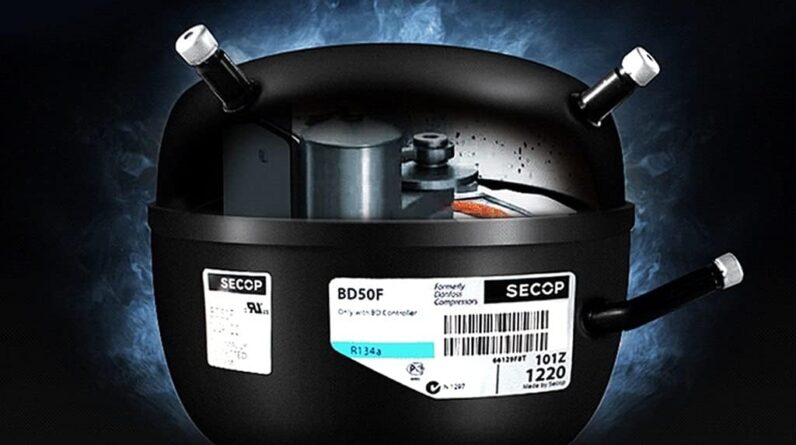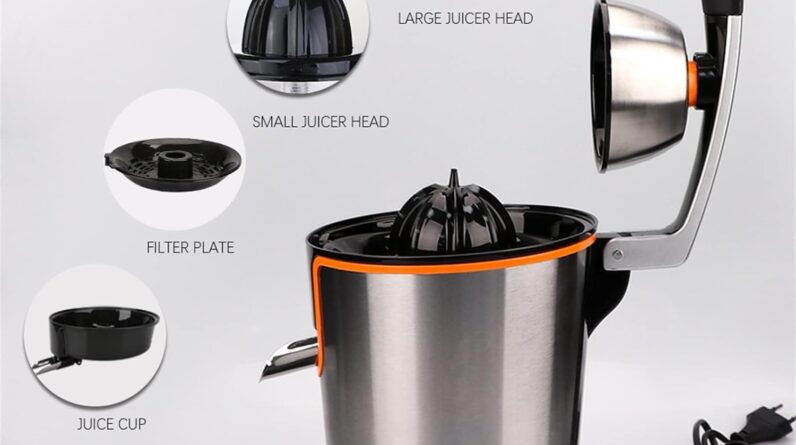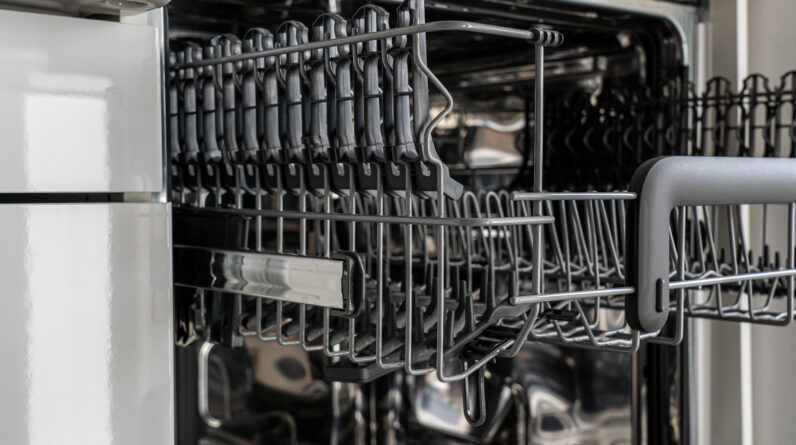
Curious about the state of your dishwasher’s water inlet valve? Wondering if it’s functioning properly? Look no further. In this article, we’ll explore the telltale signs that indicate your dishwasher’s water inlet valve might be faulty. From leaky connections to inadequate water supply, we’ll provide you with the information you need to keep your dishwasher running smoothly. So, grab a cup of coffee and let’s get started!
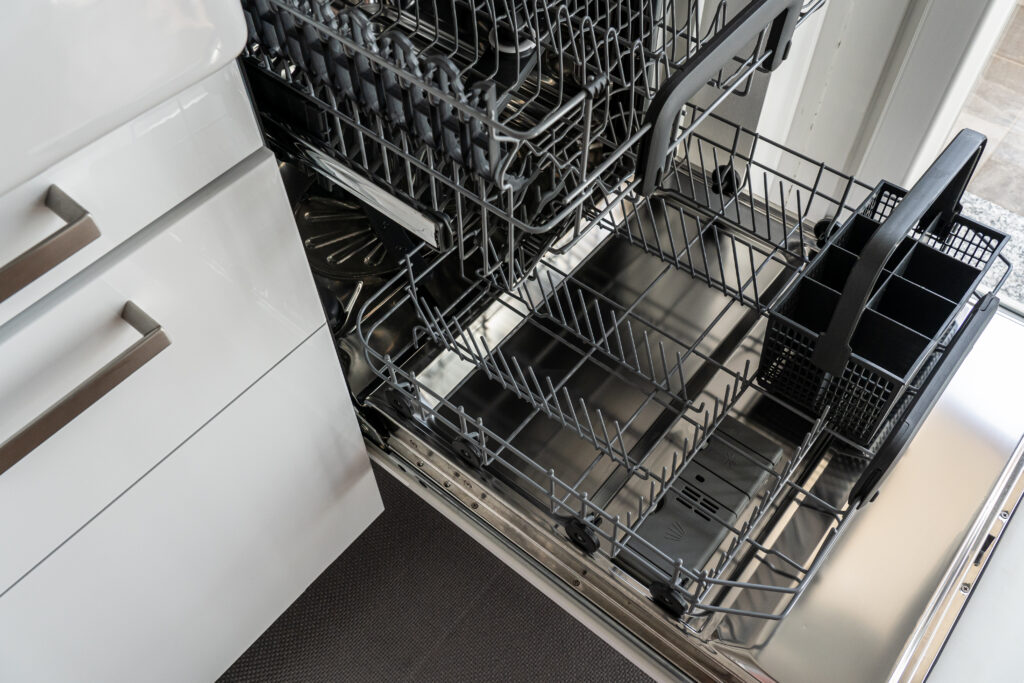
1. Water flow issues
1.1 Insufficient water supply
If you’re experiencing issues with your dishwasher’s water flow, one possible cause could be an insufficient water supply. This means that the dishwasher is not receiving enough water to properly carry out its cleaning cycle. You may notice that your dishes are not getting cleaned effectively, with food particles still remaining on them after a cycle.
To troubleshoot this issue, you can start by checking the water supply line connected to your dishwasher. Ensure that the supply valve is fully open and that there are no kinks or blockages in the line. If the water supply line appears to be fine, it’s possible that the water inlet valve in your dishwasher is faulty and not opening fully to allow sufficient water flow. In this case, it may need to be replaced.
1.2 Too much water in the dishwasher
On the other hand, if you find that your dishwasher is filling up with an excessive amount of water, it could indicate a problem with the water inlet valve not shutting off properly. This could lead to overfilling and potentially cause water to overflow from the dishwasher, resulting in leaks and water damage.
To address this issue, you can try cleaning the water inlet valve to remove any debris or mineral deposits that may be obstructing its proper functioning. However, if the problem persists, it’s advisable to consult a professional technician to inspect and potentially replace the faulty water inlet valve.
1.3 No water at all
In some cases, you may encounter a situation where there is no water at all entering the dishwasher. If you hear the dishwasher running but there is no water flowing into it, the water inlet valve could be the culprit. This valve is responsible for allowing water to enter the dishwasher during the cleaning cycle.
To troubleshoot this issue, you can start by ensuring that the water supply to the dishwasher is turned on and that there are no obstructions or leaks in the water supply line. If everything appears to be in order, it’s likely that the water inlet valve is faulty and needs to be replaced. A professional technician can assist you in diagnosing and resolving this issue.
2. Continuous water filling
2.1 Dishwasher doesn’t stop filling with water
If your dishwasher continues to fill with water without ever reaching the proper water level, it could indicate a problem with the water inlet valve failing to shut off. This can result in water overflowing from the dishwasher and potentially causing water damage to your kitchen.
To address this issue, you can try cleaning the water inlet valve to remove any debris or mineral deposits that may be preventing it from closing properly. If this doesn’t resolve the problem, it’s recommended to seek professional assistance to replace the faulty water inlet valve.
2.2 Overfilling and overflowing
Another water flow issue you may encounter is overfilling and overflowing of your dishwasher. This can be caused by a faulty water inlet valve that fails to shut off at the appropriate water level. Excessive water in the dishwasher can lead to leaks, water damage, and potential electrical hazards if water comes into contact with electrical components.
To prevent further damage, it’s important to address this issue promptly. Cleaning the water inlet valve may help if there are any obstructions causing the valve to remain open. However, if the problem persists, it’s crucial to seek professional help to replace the faulty water inlet valve and ensure proper water flow regulation.
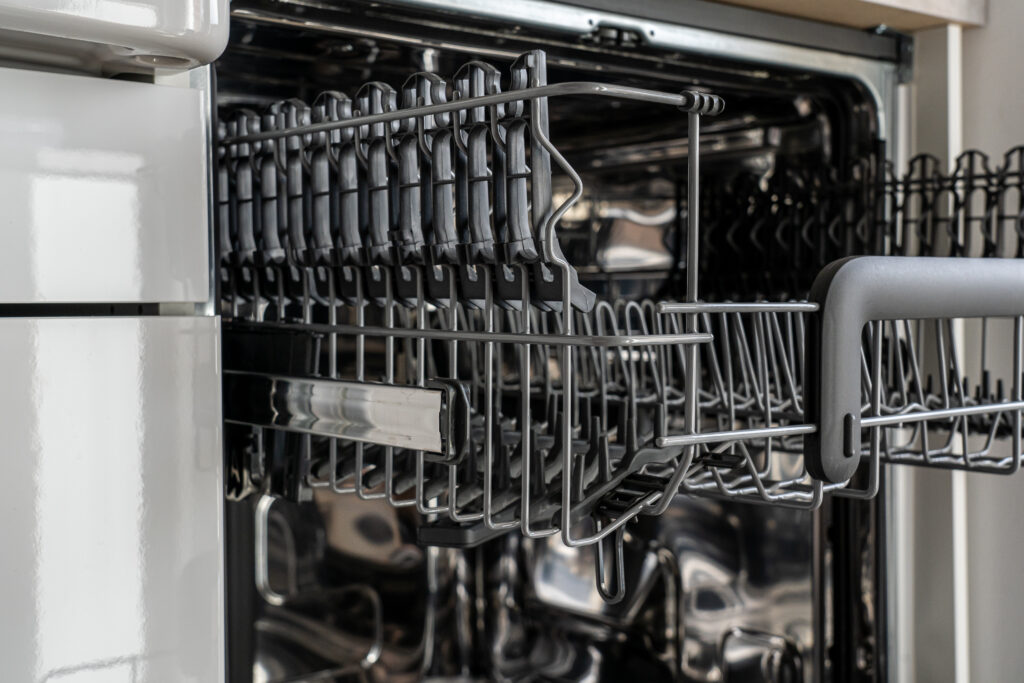
3. Leaks and water damage
3.1 Water leaking from the dishwasher
If you notice water leaking from your dishwasher, it’s crucial to investigate the cause to prevent further damage. One possible reason for water leakage is a malfunctioning water inlet valve. If the valve fails to close properly or there are seal leaks, water can escape and cause damage to your kitchen floor or surrounding areas.
To address this issue, inspect the water inlet valve for any signs of damage or wear. Additionally, check the valve’s seals for any cracks or deterioration. If you notice any issues, it’s advisable to have the water inlet valve replaced by a professional technician to prevent further leakage.
3.2 Pools of water near the dishwasher
Another indicator of a water flow issue is the presence of pools of water near your dishwasher. This can happen if the water inlet valve is not functioning correctly, allowing water to overflow from the dishwasher. If left unaddressed, this can result in water damage to your kitchen flooring or nearby cabinetry.
To resolve this issue, it’s recommended to inspect the water inlet valve for any obstructions or damage. Clean the valve if necessary, but if the problem persists, it’s crucial to have a professional technician replace the faulty water inlet valve to prevent further water leakage.
3.3 Water damage in surrounding areas
Water damage in the surrounding areas of your dishwasher can indicate a problem with the water flow within the appliance. Whether it’s due to leaks, overfilling, or incomplete water shut-off, these issues can lead to significant damage if not addressed promptly.
If you notice water damage, it’s important to investigate the cause. Check the water inlet valve for any signs of malfunction or damage. If the valve appears faulty, it’s recommended to consult a professional technician to replace it and prevent further water damage.
4. Noisy operation
4.1 Unusual sounds during water inlet
If you hear unusual sounds while your dishwasher is filling with water, it could be an indication of a problem with the water inlet valve. These sounds may include a humming noise, vibration, or the valve trying to open but failing to do so completely.
To address this issue, start by inspecting the water inlet valve for any visible damage or obstructions. Clean the valve if necessary to remove any debris that may affect its proper functioning. If the problem persists, it’s advisable to seek professional assistance to replace the faulty water inlet valve.
4.2 Vibrations and rattling
In some cases, a faulty water inlet valve can cause vibrations and rattling sounds. This can occur due to an uneven flow of water or the valve not being securely attached, resulting in movement during the water inlet process. These vibrations and rattling can be not only annoying but also indicate potential damage to the dishwasher or surrounding structures.
To address this issue, inspect the water inlet valve and its connections. Ensure that it is securely fastened and there are no loose or damaged parts. If the problem persists, it’s recommended to consult a professional technician to replace the faulty water inlet valve and restore smooth, quiet operation to your dishwasher.
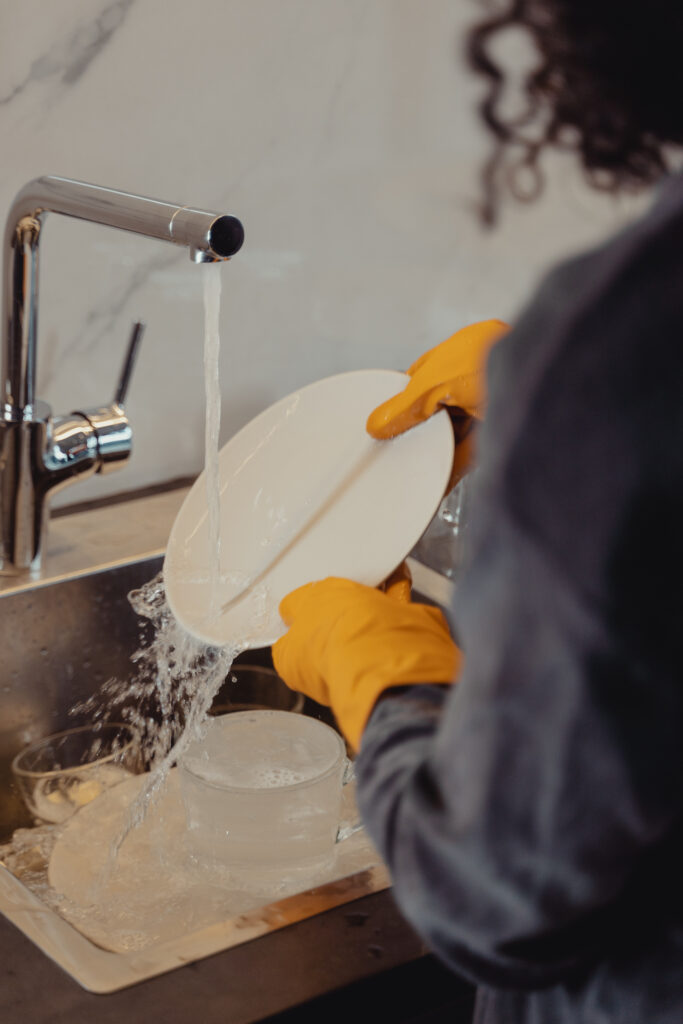
5. Failure to clean dishes properly
5.1 Dirty or greasy dishes after the cycle
One of the primary functions of a dishwasher is to thoroughly clean your dishes. However, if you find that your dishes are still dirty or greasy after a cleaning cycle, it could indicate a water flow issue, potentially caused by a faulty water inlet valve.
To troubleshoot this issue, start by ensuring that your dishwasher’s spray arms are not clogged or obstructed, as this can affect the distribution of water during the cleaning process. Additionally, inspect the water inlet valve for any signs of malfunction or restricted water flow. If the valve is suspected to be the cause, it’s advisable to seek professional assistance to diagnose and replace the faulty water inlet valve.
5.2 Soap residue on dishes
Another indication of a water flow issue is the presence of soap residue on your dishes after a wash cycle. If the water flow is disrupted or inadequate, the dishwasher may not be able to dissolve and distribute the detergent effectively.
To address this issue, ensure that you are using an appropriate amount of dishwasher detergent and that it is of good quality. Additionally, inspect the water inlet valve for any clogs or restrictions that may be impeding water flow. If the problem persists, consider consulting a professional technician to replace the faulty water inlet valve.
5.3 Cloudy or streaky glassware
If your glassware comes out of the dishwasher looking cloudy or streaky, it may indicate an issue with water temperature or quality, both of which can be affected by a faulty water inlet valve. Insufficient hot water or excessive mineral deposits in the water can lead to these undesirable results.
To improve the cleanliness of your glassware, start by checking the water temperature settings for your dishwasher. Ensure that they are appropriately adjusted and that your water heater is functioning correctly. Additionally, inspect the water inlet valve for any restrictions or malfunction that may affect the quality of the water entering the dishwasher. If necessary, seek professional assistance to replace the faulty water inlet valve and restore crystal-clear glassware.
6. Delayed or no cycle initiation
6.1 Dishwasher not starting the cycle
If your dishwasher fails to start the cleaning cycle despite being powered on, it could indicate a problem with the water inlet valve. The valve is responsible for allowing water to enter the dishwasher, and if it is not operating correctly, the cycle may not initiate.
To troubleshoot this issue, check that the dishwasher’s door is securely closed and that there are no obstructions preventing it from engaging the cycle. Additionally, inspect the water inlet valve for any signs of malfunction or blockage. If necessary, consult a professional technician to replace the faulty water inlet valve.
6.2 Long delay before starting the cycle
Experiencing a long delay before your dishwasher begins its cleaning cycle can be frustrating. One possible reason for this delay is a faulty water inlet valve. If the valve is not opening promptly or it is not receiving the necessary signal to start the cycle, it can result in a delay.
To address this issue, start by ensuring that your dishwasher’s controls are set correctly and that the door is latched properly. Inspect the water inlet valve for any signs of malfunction or restricted water flow. If the delay issue persists, it’s advisable to seek professional assistance to replace the faulty water inlet valve and improve the cycle initiation time.
7. Inconsistent water temperature
7.1 Water not getting hot enough
If you find that the water in your dishwasher is not getting hot enough during the cleaning cycle, it may indicate a problem with the water inlet valve. The valve controls the flow of hot water into the dishwasher, and if it is not functioning correctly, the water may not reach the desired temperature.
To address this issue, start by confirming that your dishwasher’s water temperature settings are appropriately adjusted. Additionally, check the water inlet valve for any obstructions or signs of malfunction. If necessary, consult a professional technician to replace the faulty water inlet valve and ensure the water reaches the proper temperature for effective cleaning.
7.2 Intermittent hot and cold water
If you notice fluctuating water temperature during the dishwasher cycle, it could be indicative of a faulty water inlet valve. Inconsistent flow of hot and cold water can disrupt the cleaning process and lead to unsatisfactory results.
To troubleshoot this issue, start by ensuring that your dishwasher’s hot water supply is correctly connected and functioning. Inspect the water inlet valve for any signs of malfunction or restricted water flow. If the valve appears to be the cause, consult a professional technician to have it replaced and restore consistent water temperature during your dishwasher’s cleaning cycles.
8. Error codes or warning lights
8.1 Error code related to water inlet valve
If your dishwasher displays an error code specifically related to the water inlet valve, it’s a clear indication that there is a problem with this component. Error codes may vary depending on the dishwasher model, but they generally indicate a malfunction, blockage, or insufficient water flow in the inlet valve.
To address this issue, start by consulting your dishwasher’s user manual for specific instructions on decoding the error code. This guide may provide insights on possible remedies or troubleshooting steps for the specific issue related to the water inlet valve. If necessary, seek professional assistance to diagnose and replace the faulty water inlet valve to resolve the error code and restore proper dishwasher functionality.
8.2 Warning lights indicating a problem
Some dishwashers are equipped with warning lights that illuminate when a problem is detected. If you notice a warning light related to water flow or the water inlet valve, it suggests there is an issue that requires attention.
To address this issue, consult your dishwasher’s user manual for information on the specific meaning of the warning light and any accompanying instructions on troubleshooting or resolving the problem. If the warning light persists or if you are unsure about the necessary steps, it’s recommended to seek professional assistance for a thorough diagnosis and potential replacement of the faulty water inlet valve.
9. Burnt or scorched valve
9.1 Visible signs of burning or scorching
If you observe visible signs of burning or scorching on the water inlet valve, it’s a clear indication that there is a serious issue that needs attention immediately. Burnt or scorched areas may suggest an electrical malfunction or overheating of the valve.
In this situation, it is crucial to prioritize your safety and seek professional assistance immediately. A trained technician can inspect the water inlet valve, assess the cause of the burning or scorching, and replace the valve if necessary to ensure the safe and reliable operation of your dishwasher.
9.2 Electrical smell coming from the valve area
Another sign of a faulty water inlet valve is the presence of an electrical smell emanating from the valve area. This smell may indicate an electrical problem with the valve, such as a short circuit or overheating.
If you detect an electrical smell, it’s crucial to turn off your dishwasher and disconnect it from the power source. This precaution is essential for your safety and to prevent further damage. Consult a professional technician to inspect the water inlet valve and address the electrical issue promptly. It may be necessary to replace the faulty valve to prevent potential electrical hazards and ensure the safe operation of your dishwasher.
10. Long fill time
10.1 Excessive time taken to fill the dishwasher
If you notice that your dishwasher is taking an exceptionally long time to fill with water, it could suggest a problem with the water inlet valve. The valve is responsible for allowing water into the dishwasher, and a malfunctioning valve can lead to a prolonged fill time.
To address this issue, start by inspecting the water inlet valve for any signs of malfunction or blockage. Clean the valve if necessary to remove any debris that may be impeding water flow. If the problem persists, it’s advisable to consult a professional technician to replace the faulty water inlet valve and restore proper water flow and fill time to your dishwasher.
10.2 Delayed water flow
Another potential indication of a faulty water inlet valve is delayed water flow into the dishwasher. If you notice a significant delay between starting the cleaning cycle and when water actually begins to flow into the dishwasher, it could suggest an issue with the valve not opening promptly or receiving the proper signal.
To troubleshoot this issue, first ensure that your dishwasher’s door is securely closed and that the cycle has been initiated correctly. If the delay in water flow persists, it’s recommended to seek professional assistance to inspect and potentially replace the faulty water inlet valve, ensuring timely water flow during your dishwasher’s cleaning cycles.
In conclusion, a faulty water inlet valve can give rise to a range of water flow issues, impact the overall cleaning performance of your dishwasher, and even cause damage to your kitchen or surrounding areas. If you encounter any of the signs mentioned in this article, it’s important to diagnose and address the problem promptly. Seeking professional assistance is recommended to ensure accurate diagnosis and proper replacement of the faulty water inlet valve, restoring the efficient functioning of your dishwasher.


